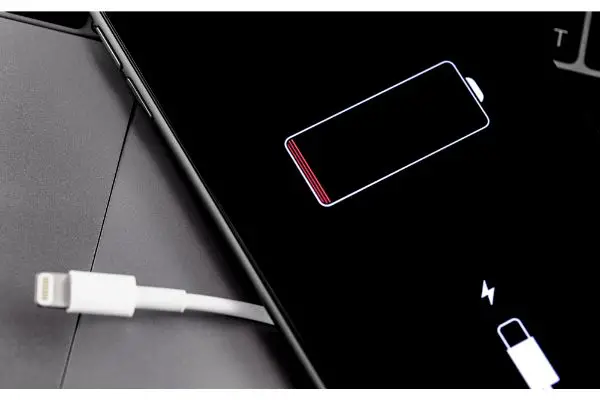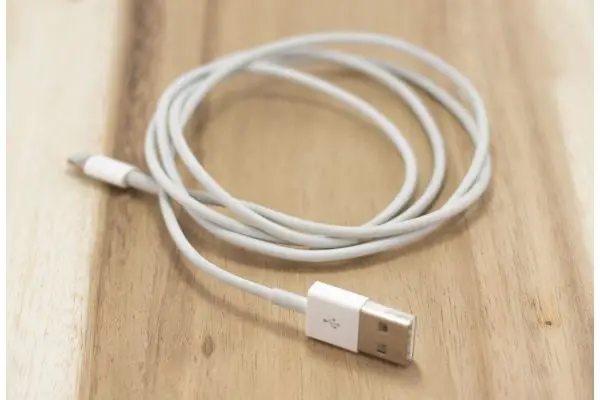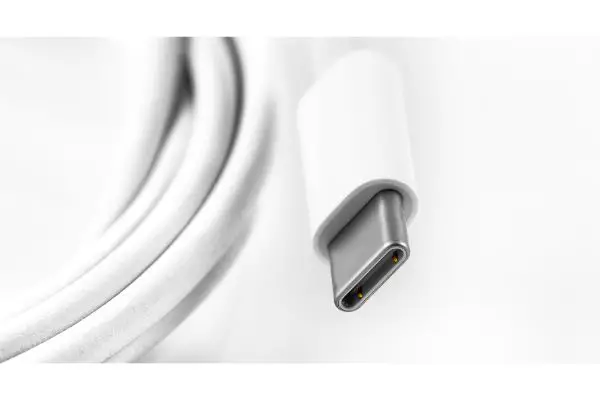Disclaimer: This post may contain affiliate links, meaning we get a small commission if you make a purchase through our links, at no cost to you. For more information, please visit our Disclaimer Page.
If you’re looking for information about Apple chargers, you’ve come to the right place. Here, we will answer some of the most commonly asked questions about Apple chargers.
So whether you’re wondering if you can use the same charger for your iPhone and iPad, or whether using an iPad charger is bad for your iPhone, we’ve got you covered. Keep reading to learn more!
Table of Contents
Can I Use the Same Charger for iPhone and iPad?
The answer to this question is yes, you can use the same charger for both iPhone and iPad. However, there are a few things to keep in mind.
First, both the devices should have the same type of connector. If your iPhone has a Lightning connector and your iPad has a USB-C, then you will need two different chargers. Nowadays, all the latest Apple devices are equipped with a USB-C connector so you can use the same charger for all of them.
Second, the charger that you use should match the wattage of your device. So if you have an iPhone that requires a five-watt charger, you can use that same charger for your iPad.
However, if your iPad requires a 12-watt charger, you will need to use a different one.
Third, keep in mind that the iPad is a larger device and will require more power to charge than the iPhone. So if you’re using the same charger for both devices, it will take longer to charge your iPad.
Finally, the wattage of both devices should be the same. The latest iPhones and iPads have a wattage of 18W-20W. So if you’re using an older charger with a lower wattage, it will charge your devices more slowly.
Can You Charge an iPhone With a MacBook Charger?
The answer to this question is yes, you can charge your iPhone with a MacBook charger. In fact, the MacBook charger is more powerful than the standard iPhone charger and will charge your device faster.
However, there are a few things to keep in mind when using a MacBook charger to charge your iPhone.
1. Make sure that the charger is compatible with your iPhone. The newest MacBook chargers are compatible with all iPhone models. However, iPhones do not use USB-C yet. So you will have to use a USB-C to Lightning cable to connect to the Mac charger.
If you’re not sure, check Apple’s website or the packaging that came with your device.
2. Use the proper cable. The cable that came with your iPhone will work just fine. You don’t need to use a special “iPhone” cable or a “MacBook” cable.
Make sure the cable comes from a reputable manufacturer. Otherwise, the charge may not be as fast.
3. Keep an eye on the charging process.
4. Use a compatible connector to convert the USB-C port to a Lightning cable.
Once your iPhone reaches 100%, unplug it from the charger. Here’s more information on the Apple website about Mac chargers.
Is Charging an iPhone With an iPad Charger Bad?
According to the compatibility chart provided by Apple with its 12W adapters, you can charge all iPhones after iPhone 5, almost all the iPads with the same charger.
The slightly more powerful iPad charger does not damage the iPhone battery or any of its internal components. In fact, it will charge the iPhone faster than the standard iPhone charger.
It is noteworthy that Apple does not recommend using the 140W USB-C charger with iPhones and iPads. However, you may use chargers with wattage up to 96W.
It is safe to use the high-powered USB-C chargers with Apple’s newest iPhones and iPads, as the iPhone or iPad will determine how much power to draw.
Is There a Difference Between iPhone and iPad Charger Cable?
Yes, there is a difference between iPhone and iPad charger cables. The main difference is in the connector type.
The latest iPads use a USB-C connector while older models use a Lightning connector. So if you have an iPhone that uses a Lightning connector, you will need to use a different cable to charge your iPad.
iPads also use a different wattage than iPhones. So if you’re using the same charger for both devices, it will take longer to charge your iPad (considering your iPhone charger has a smaller wattage than a typical iPad charger)
Is an iPad Charger More Powerful Than an iPhone Charger?
The iPad charger is more powerful than the iPhone charger in terms of wattage. The iPad needs more power to charge because it has a larger battery. You can use an iPhone charger to charge your iPad, but it will take longer.
Also, typically, the iPad charger is intended for USB-C, which supports higher wattages. Although you can use a standard iPhone lightning cable with the iPad charger, it will charge a little more quickly.
Nowadays, Apple does not provide a charger in the box. In which case, you need to buy the standard adapter available on their site along with a cable connector that is recommended for your device.
Are Third Party Chargers Bad for iPhone & iPad?
No, third-party chargers are not bad for your iPhone or iPad. However, you should always buy a charger that is MFi (Made for iPhone/iPod/iPad) certified.
MFi certification means that the charger has been designed specifically for use with Apple devices and meets all of their safety standards.
You can find MFi-certified chargers on Amazon and other online retailers. Just make sure to check the reviews before you buy to make sure that you’re getting a quality product.
Do remember that not all MFi certified chargers are created equal. Some may be cheaper than others, but they may not work as well.
It’s always better to spend a few extra dollars on a quality charger that is going to work well and last long, rather than buying a cheap one that might not work properly.
What Are the Different Types of iPhone Chargers?
The different types of iPhone chargers are:
Standard iPhone Charger
This is the most common type of charger and it is the one that comes with your iPhone. It has a power output of up to five watts and it charges via a USB port.
Fast Charger
A fast charger is an adapter that allows you to charge your iPhone faster than with a standard charger. Fast chargers have a power output of up to twelve watts and they charge via a USB Type-C port.
Wireless Charger
A wireless charger is a charging pad that you can place your iPhone on top of in order to charge it wirelessly. Wireless chargers have a power output of up to seven watts and they charge via inductive charging.
Which Type of Charger Should You Use?
The type of charger that you should use depends on your needs. If you need to charge your iPhone quickly, then you should use a fast charger. If you want to charge your iPhone wirelessly, then you should use a wireless charger.
However, if you just need a standard charger that will work with your iPhone, then any of the above types will work fine. Just make sure to buy an MFi-certified charger so that you know it is safe to use with your device.
What Happens if You Use the Wrong Charger?
If you use the wrong charger for your iPhone, it could damage your device or cause it to overheat. So, it is important to only use chargers that are specifically designed for use with iPhones.
Charging your iPhone with the wrong charger could also void your warranty, so it is best to avoid doing it altogether.
If you’re not sure which charger to use with your iPhone, you can check the Apple website or ask a member of the Apple Store staff for help.

(Attribution: ©[Primakov]/Depositphotos.com)
Can Cheap Chargers Damage an iPhone?
iPhone chargers are not all created equal. Some are made with cheaper materials that can damage your phone. If you’re looking for a new charger, be sure to buy one that’s Apple certified.
Here are some signs that your charger is damaging your iPhone:
Your Phone Feels Hot to the Touch When It’s Charging
This is a sign that your charger is overworking your phone’s battery. Over time, this can damage the battery and cause it to swell up. If you notice this happening, stop using the charger and get a new one.
The Charging Port on Your Phone Is Damaged or Bent
This can happen if you use a cheap charger that doesn’t fit snugly into the port. When this happens, it puts stress on the port and can damage it. If you see any damage to your port, stop using the charger right away and get a new one.
Your Phone Takes Longer to Charge Than It Used To
This is another sign that your charger is overworking your battery. If you notice this happening, stop using the charger and get a new one.
If you’re not sure whether or not your charger is damaging your iPhone, take it to an Apple Store and have them check it out.
They can tell you if there’s anything wrong with it and give you a new one if necessary. In the meantime, be sure to use only Apple certified chargers for your iPhone.
Final Thoughts
So, there you have it! Some commonly asked questions about Apple chargers. As you can see, there are some definite differences between the iPhone and iPad chargers, so be sure to use the correct one for your device.
And while third-party chargers may be cheaper, they could potentially damage your device, so it’s best to stick with an official Apple charger.
We hope this article was helpful in clearing up any confusion! Thanks for reading!


